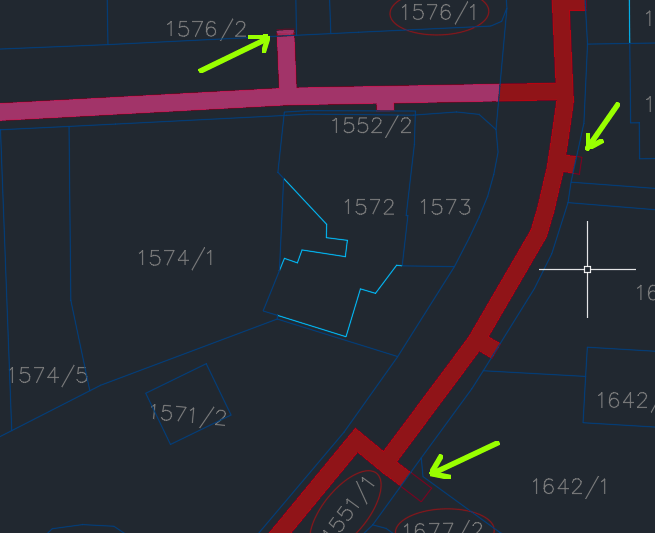

You have confirmed the layer is set to plot and there are no viewport overrides. (Since loops are closed lines that are considered area boundaries, they are essentially polygons.)After plotting your design, you noticed that the boundary lines of a hatch are not plotting. The loops of each hatch are closed, simple, continuous, and are not self-intersecting except at their endpoints.
Or the hatch pattern might be on a layer that is turned off, and you proceed to edit the file, not knowing that a hatch pattern exists.Why is hatch not working AutoCAD Make sure the hatch layer is turned on and not frozen. The AutoCAD reader will also preserve polyline bulge information. Features created may be of polygon, donut, or aggregate geometry, where the aggregates may contain either donuts and polygons or just ordered polygons depending on the usage of the Preserve Complex Hatches and MPolygons reader parameter. 1.The AutoCAD Reader creates features with varied geometry depending on the geometry of the loops that compose them. You need to adjust your CTB plot style to account for the visibility of that layer color.
In addition, their geometry must be 2D or planar 3D with a constant Z, which can be stored as an elevation value.Hatch patterns exist in external pattern files. The Workbench writer parameter Prefer Writing Donuts as Hatches can also be used to control hatch writing. The AutoCAD Reader has the following limitations when reading hatch features: Associative hatches are not preserved, one pattern is allowed per hatch, only one or two color gradients are supported, unclosed hatch boundary loops are closed, and splines are not supported for hatch boundary loops.The AutoCAD Writer has the following limitations when writing hatch features: Hatch features must be closed area features of polygon, donut, or aggregate geometry according to how the AutoCAD Reader created them. To see the effect of a changed FILLMODE value, you must use the REGEN. Turn on the hatch quick preview and fill mode (see Hatch preview does not appear for a selected area in AutoCAD).If the system variable FILLMODE is 0 (Off), the hatch patterns are not displayed.
Predefined patterns can be found in the acdb.pat file in that folder, and additional patterns can also be added to that file.The following attributes may be set when reading hatches.The flag indicating if the hatch is associative.The flag that represents whether the hatch feature was created to preserve complex hatches. Pat files in the /plugins/realdwg/Support folder. Pat files located in folder specified by the ACAD operating system environment variable, or in the related folder for any installed AutoCAD product.The REALDWG format writer will look for custom hatch patterns in custom. However, the ACAD and REALDWG writers look for patterns in different ways.The ACAD format writer will look for custom hatch patterns in custom.
Must be a predefined value for predefined gradients. Specified as a character string of comma-separated red, green and blue values.The name of the gradient. Specified as a character string of comma-separated red, green and blue values.The second color used to interpolate a two color gradient fill. It the single color used in a one color gradient fill.
This is an integer representing the addition of applicable type flags.The general type of the hatch, specifying the usage of either patterns or gradients.The x-axis coordinate of the origin of the hatch in world coordinates.The y-axis coordinate of the origin of the hatch in world coordinates.The angle of the pattern fill for the hatch feature in degrees.The flag indicating if the hatch pattern is doubled by adding a second set of lines at 90 degrees to the first. This is only used for hatches with gradients.Autocad_hatch_loop.autocad_hatch_bulges_presentThe flag indicating if polyline bulge arcs exist in each of a list of hatch boundary loops.The type of the hatch loop. In the future a value of 1 may be supported for user-defined gradients. Currently this is set to 0 for predefined gradient. Gradients can be two color, or one color with a luminance value set by autocad_hatch_shade_tint_value.The interpolation value between the default and shifted values of the gradient's definition.The type of the gradient.
Custom-defined patterns are pre-created patterns that must be present in the location of the predefined patterns. This is only used for user-defined patterns.The type of the hatch pattern. May be a predefined value for predefined patterns, a predefined value for custom patterns, or any string for user-defined patterns.This represents the scaled size of the pattern for predefined and custom-defined patterns.This represents the space between the parallel lines of the hatch pattern.
If the hatch has a gradient and is using one color mode, this value is applied to the first color.


 0 kommentar(er)
0 kommentar(er)
